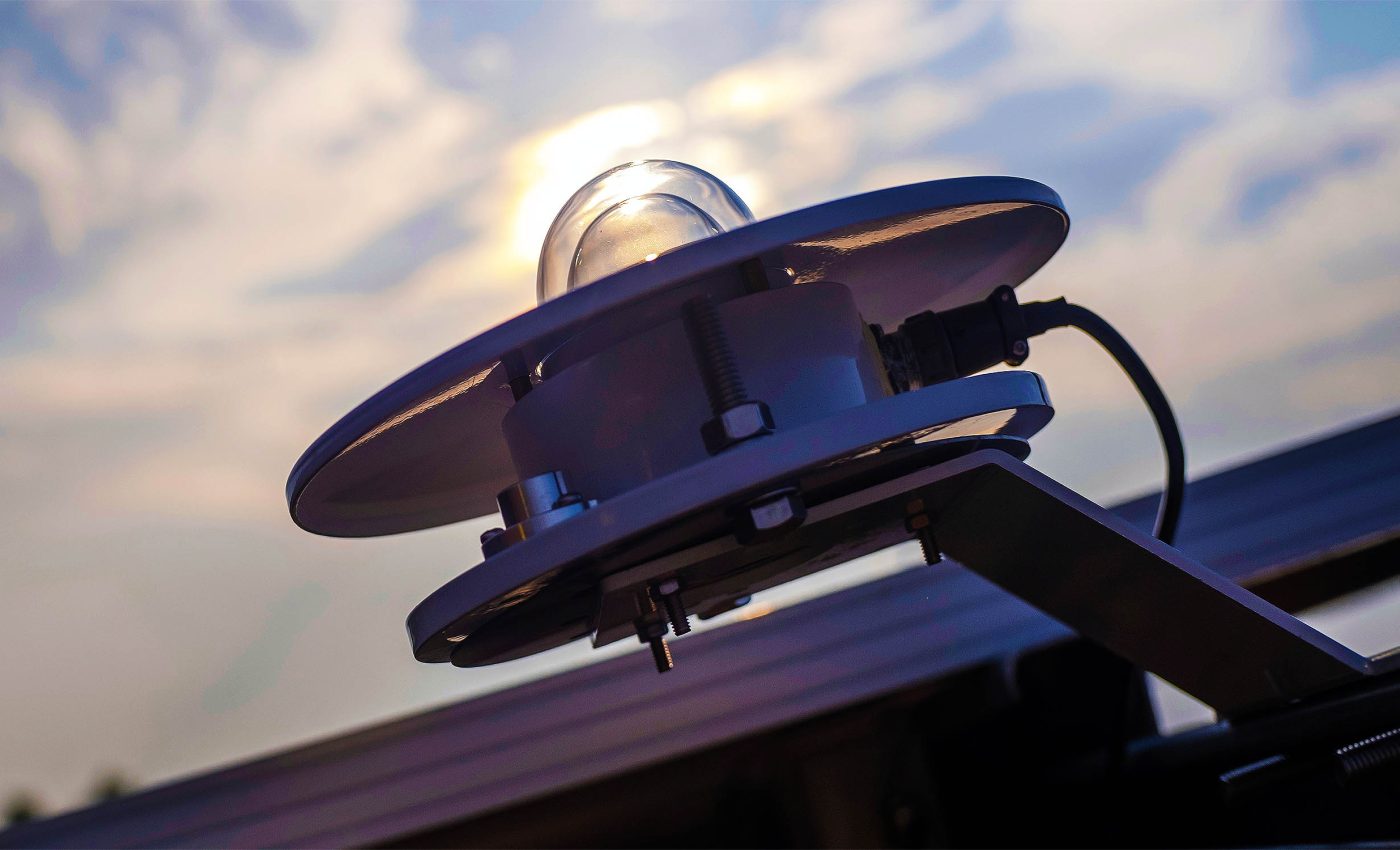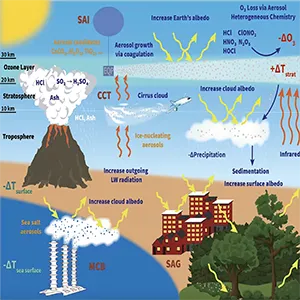
Blocking sunlight to cool the Earth could heat up other problems
For decades, the idea of spraying sunlight-blocking particles into the sky to cool the Earth sounded like a sci-fi move. Now, it’s a real part of the climate change conversation.
But just because scientists can model this aerosol technique, doesn’t mean it’s going to work the way those models predict.
It’s called stratospheric aerosol injection, or SAI. The concept is simple in theory: shoot tiny particles high into the atmosphere so they reflect sunlight and cool Earth. But in practice? It’s far from simple.
Earth doesn’t follow perfect models
Scientists have run hundreds of simulations to test how SAI might work. Most models assume perfect conditions. They use ideal particles in ideal amounts that are placed in ideal locations. But that’s not how the world works.
V. Faye McNeill is an atmospheric chemist and aerosol scientist in the Climate School at Columbia University.
“Even when simulations of SAI in climate models are sophisticated, they’re necessarily going to be idealized,” said McNeill.
“Researchers model the perfect particles that are the perfect size. And in the simulation, they put exactly how much of them they want, where they want them.”
But when you start to consider where we actually are, compared to that idealized situation, the uncertainty of those predictions becomes apparent.
Blocking sunlight requires cooperation
In a recent study, the Columbia team looked closely at all the factors that could affect SAI’s success or failure. A major takeaway was that latitude is an important factor.
Spraying particles over the poles could interfere with tropical monsoons. Using this technique near the equator might shift the jet stream and change how heat moves around the globe. Even the season or time of year could change the outcome.
“It isn’t just a matter of getting five teragrams of sulfur into the atmosphere. It matters where and when you do it,” explained McNeill.
That means SAI would need global coordination. However, given how hard it is for countries to agree on anything climate-related, the odds of that happening are slim.
Lessons from a volcano
One of the biggest reasons SAI seems possible is because of a real event: the 1991 eruption of Mount Pinatubo in the Philippines.
That explosion sent sulfur particles into the stratosphere and cooled the planet by almost 1.8°F (1°C) for a few years. It’s often used as proof that spraying aerosols could work.
But there were side effects. Pinatubo’s eruption also weakened India’s monsoon season, cutting rainfall across South Asia. It caused warming in the stratosphere and damaged the ozone layer.
If we try to mimic this cooling effect, we could end up with even more problems: acid rain, polluted soil, disrupted weather. The same sulfur-based particles that cool the Earth might come with a heavy cost.

Looking beyond sulfur
To avoid sulfur’s downsides, scientists have explored other materials for SAI. Some of the options include calcium carbonate, alpha alumina, titanium dioxide (in forms like rutile and anatase), cubic zirconia, and even diamond.
“Scientists have discussed the use of aerosol candidates with little consideration of how practical limitations might limit your ability to actually inject massive amounts of them yearly,” said Miranda Hack, the study’s lead author.
Take diamond, for example. It has great optical properties for reflecting sunlight. But good luck finding enough of it to spray into the sky every year.
Cubic zirconia and rutile titania could maybe be sourced in large enough quantities for blocking sunlight – but the researchers say prices would skyrocket with demand. Only alpha alumina and calcium carbonate seem available and affordable enough to consider.
Blocking sunlight is unpredictable
To work for SAI, however, these particles have to be incredibly small – less than a micron. At that size, they clump together.
Once that happens, the particles reflect less sunlight and behave unpredictably in the atmosphere.
“Instead of having these perfect optical properties, you have something much worse. In comparison to sulfate, I don’t think we would necessarily see the types of climate benefits that have been discussed,” said Hack.
There’s no reset button for Earth
On paper, SAI may seem like a simple fix for climate change. But once you factor in real-world complexities – such as where and how the aerosols are released and how long they actually linger in the atmosphere – it becomes clear that we know far too little to depend on it.
“It’s all about risk trade-offs when you look at solar geoengineering,” said Gernot Wagner, a climate economist at the Columbia Business School. “It isn’t going to happen the way that 99 percent of these papers model.”
If SAI ever happens, it won’t be a predictable fix. It will be a gamble – one with high stakes, uncertain odds, and no clear way to hit undo.
The full study was published in the journal Scientific Reports.
—–
Like what you read? Subscribe to our newsletter for engaging articles, exclusive content, and the latest updates.
Check us out on EarthSnap, a free app brought to you by Eric Ralls and Earth.com.
—–













